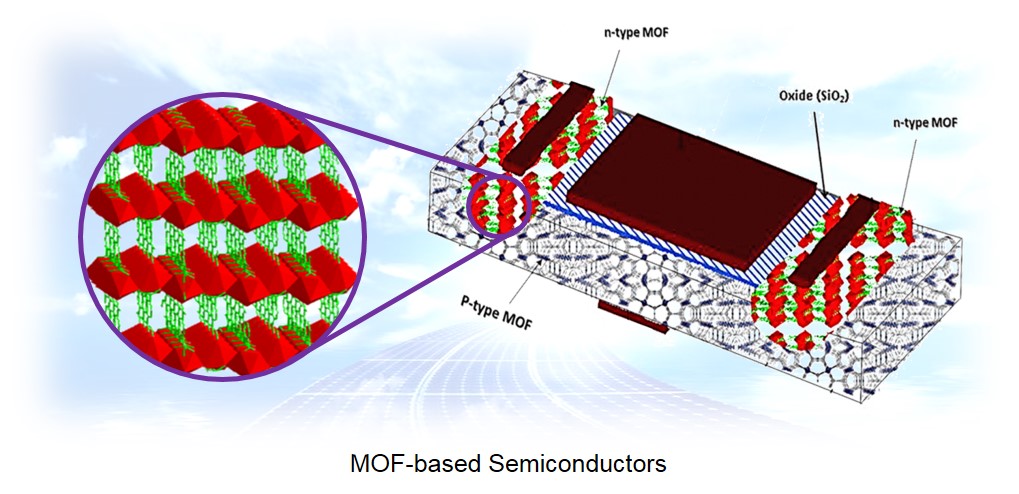Institute of Chemistry, Academia Sinica – Research
金屬有機配位聚合物之新穎低能隙半導體材料
Semiconductor Metal–Organic Frameworks: Future Low Bandgap MaterialsAdvanced Materials 2017, 29, 1605071.
Muhammad Usman, Shruti Mendiratta, and Kuang-Lieh Lu*
金屬有機配位聚合物具有密度低、孔隙率高、結構及功能易調節等特性,具發展半導體材料之潛力。半導體工業發展迅速,對日趨微型、奈米化製程之積體電路而言,發展新型半導體材料以取代傳統矽、鍺、三五族等化合物有迫切之需求。金屬有機配位聚合物結合無機及有機單元之優點,顯現其安定、便宜與多元之特質,而可應用於下一世代微電子產業。本論文發展金屬有機配位聚合物半導體,並對其特性、能隙以及在微電子元件之應用潛力進行討論,闡明一個重要且新穎之研究方向。
Metal–organic frameworks (MOFs) with low density, high porosity, and easy tunability of functionality and structural properties, represent potential candidates for use as semiconductor materials. The rapid development of the semiconductor industry and the continuous miniaturization of feature sizes of integrated circuits toward the nanometer (nm) scale require novel semiconductor materials instead of traditional materials like silicon, germanium, and gallium arsenide etc. MOFs with advantageous properties of both the inorganic and the organic components promise to serve as the next generation of semiconductor materials for the microelectronics industry with the potential to be extremely stable, cheap, and mechanically flexible. Here, a perspective of recent research is provided, regarding the semiconducting properties of MOFs, bandgap studies, and their potential in microelectronic devices.

